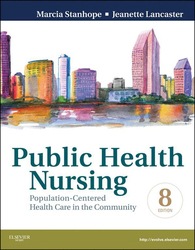「重要なお知らせ:日本語書籍をご購入いただき、eLibraryをご利用の皆さまへ」
エルゼビアは、より快適にサービスをご利用いただくため、システムの重要なアップデートを実施いたします。
現在、新サイト、eBooks+への移行が進められています。
新規ユーザー登録および書籍の登録はElsevier eLibraryでは停止しております。
12月15日以降に
こちらよりご利用・ご登録ください。
Public Health Nursing - Revised Reprint






Book Description
This Revised Reprint of our 8th edition, the "gold standard" in community health nursing, Public Health Nursing: Population-Centered Health Care in the Community, has been updated with a new Quality and Safety Education in Nursing (QSEN) appendix that features examples of incorporating knowledge, skills, and attitudes to improve quality and safety in community/public health nursing practice. As with the previous version, this text provides comprehensive and up-to-date content to keep you at the forefront of the ever-changing community health climate and prepare you for an effective nursing career. In addition to concepts and interventions for individuals, families, and communities, this text also incorporates real-life applications of the public nurse’s role, Healthy People 2020 initiatives, new chapters on forensics and genomics, plus timely coverage of disaster management and important client populations such as pregnant teens, the homeless, immigrants, and more.
- Evidence-Based Practice boxes illustrate how the latest research findings apply to public/community health nursing.
- Separate chapters on disease outbreak investigation and disaster management describe the nurse’s role in surveilling public health and managing these types of threats to public health.
- Separate unit on the public/community health nurse’s role describes the different functions of the public/community health nurse within the community.
- Levels of Prevention boxes show how community/public health nurses deliver health care interventions at the primary, secondary, and tertiary levels of prevention.
- What Do You Think?, Did You Know?, and How To? boxes use practical examples and critical thinking exercises to illustrate chapter content.
- The Cutting Edge highlights significant issues and new approaches to community-oriented nursing practice.
- Practice Application provides case studies with critical thinking questions.
- Separate chapters on community health initiatives thoroughly describe different approaches to promoting health among populations.
- Appendixes offer additional resources and key information, such as screening and assessment tools and clinical practice guidelines.
- NEW! Quality and Safety Education in Nursing (QSEN) appendix features examples of incorporating knowledge, skills, and attitudes to improve quality and safety in community/public health nursing practice.
- NEW! Linking Content to Practice boxes provide real-life applications for chapter content.
- NEW! Healthy People 2020 feature boxes highlight the goals and objectives for promoting health and wellness over the next decade.
- NEW! Forensic Nursing in the Community chapter focuses on the unique role of forensic nurses in public health and safety, interpersonal violence, mass violence, and disasters.
- NEW! Genomics in Public Health Nursing chapter includes a history of genetics and genomics and their impact on public/community health nursing care.


 (0 rating)
(0 rating)